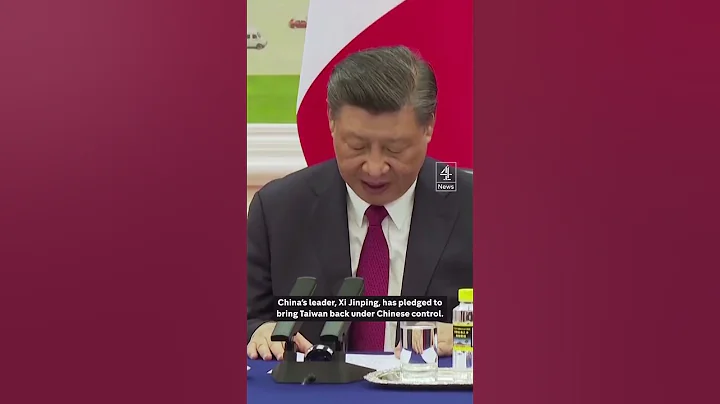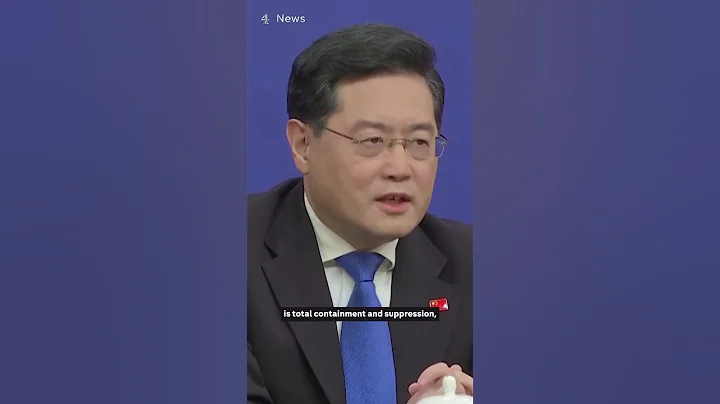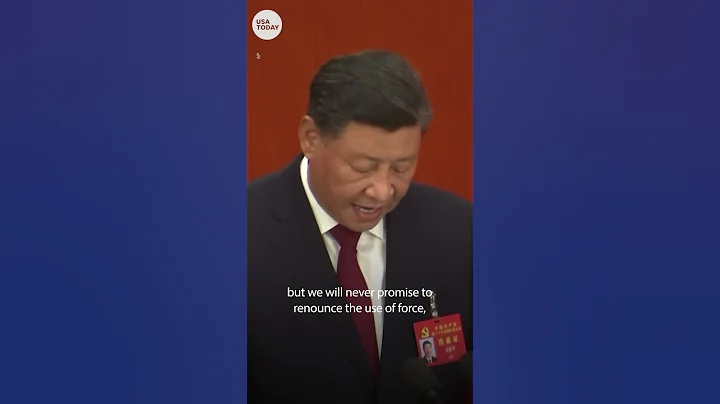Russia and Ukraine has caused many countries to have a lot of doubts and debates about the future of tanks . There is a radical view that there is almost no need for tanks in future wars, because tanks are vulnerable to various types of man-portable anti-tank missiles; there is also a view that tanks are still needed in future wars. Yes, because there is currently no weapon that can replace tanks to perform assault missions! It's just that the tank needs to make corresponding changes so that can adapt to a better combat environment.
The appearance of the German KF51 "Panther Tank" not long ago seems to indicate that the latter view is more in line with the direction of the war: this tank is equipped with drones, cruise missiles and remote control weapon stations , and is equipped with advanced active defense system . Of course, the Panther tank only represents the idea of "tanks need to be improved". Whether some specific measures are correct for and is still controversial or needs to be verified. For example, many people believe that it is unnecessary to equip tanks with cruise missiles with a range of up to 60 kilometers. This can be done by ordinary vehicles in the second line behind.

For tanks, the most important thing is to strive to improve the firepower strike capability "within a few kilometers". Following this line of thinking, adding mortars and mortars to tanks is an option worthy of in-depth discussion: this will provide the tank with the ability to deflect and long-range non-contact strikes that it currently does not have.

99 tank equipped with a 120MM mortar diagram
tank equipped with a mortar feasibility analysis
The mortar has the advantages of simple structure, small size, light weight, and relatively small recoil. Even the heavy-duty towed 120MM mortar weighs only more than 500 kilograms, while the ordinary non-towed 120 mortar weighs only 200-300 kilograms, while the smaller caliber 81MM, 60MM and small and medium-sized mortars weigh even more. Light. For tanks weighing dozens of tons, there is no problem in installing such a small, light-weight, low-recoil artillery piece.

The weight of the non-tracted 120MM mortar is only over 200 kilograms.

60MM mortar is even lighter.
How to install and use the mortar on the tank. There are three different modes available: fully manual, semi-automatic/semi-manual, and fully automatic. choose.
fully manual mode. That is, the aiming and loading of mortars are completely done manually. At this time, the mortar is installed on the base on the side of the turret. When using it, the personnel in the turret lean out, manually aim the mortar and adjust the height and azimuth angles, and then manually place the mortar shells. is put into the muzzle to attack the target. This method of installation and use is the simplest, but due to the need for manual rocket aiming and loading, the response time is relatively slow. And because combatants are required to extend their bodies out of the turret, the safety of personnel is relatively poor. However, since mortars are basically used far away from the enemy, their safety is better than the current situation of "leaning out and using tank machine guns".

96 type mortar installed manual sighting 120MM mortar
semi-automatic/semi-manual mode. In this case, the mortar is also installed on one side of the turret, but the mortar is automatically aimed and the loading is done manually. Since the mortar is an automatic aiming operation, its firing preparation time is greatly shortened, and it is especially suitable for attacking suddenly appearing targets. Moreover, the personnel in the turret only need to lean out to reload, so the exposure time is shorter and personnel safety is better.

99 tank equipped with mortar: automatic aiming + manual loading
fully automatic mode. In this mode, the mortar can be mounted either on the side of the turret or on the rear of the turret. Aiming and loading of the artillery are all done automatically. This mode can give full play to the advantages of tank informatization and modern sighting equipment, not only allowing the mortar to fire quickly, but also making it safer for combatants to stay in the turret throughout the entire process.

The Type 99 tank equipped with an automatic loader
The picture below shows the Type 99 tank equipped with a horizontal muzzle loader.The tail compartment of the tank is equipped with mortar shells and a horizontal loader. When the mortar is loaded, the muzzle is changed to a horizontal position, and the horizontal loader feeds the shells into the muzzle. Afterwards, the mortar raised its muzzle for automatic aiming and firing.

The Type 99 tank is equipped with a 120MM fully automatic mortar.
The advantages of adding a mortar to a tank are
1, forming the ability to shoot at a large elevation angle, thereby having the ability to attack targets at large heights in street fighting and mountain warfare .
At present, the shooting elevation angle of tank guns in various countries does not exceed 18 degrees. Therefore, in urban street fighting and mountain warfare, it is impossible to attack targets upstairs and on mountain tops. The maximum elevation angle of the mortar is 85 degrees, so even if its muzzle velocity is not high, it can effectively attack targets on rooftops and mountain tops. The tank will not be allowed to just stare at high-altitude targets in street battles and mountain battles. Even if the enemy sets its firepower point on a high-rise building, the tank can still use mortars to fire directly at high elevation angles.

The main gun of the current tank cannot attack the target on the mountain top

The mortar on the tank can bombard the target on the upper floor of the tall building
2, and has the ability of deflection and long-range non-contact strike.
Today's battlefield environment is complex. In addition to fighting in a flat desert environment, in many cases the enemy is hidden behind obstacles such as buildings, woods, mountains, bunkers, and trenches. Therefore, even tank guns can hit targets 2 to 3 kilometers away, but in actual combat, tank guns cannot attack targets in forests and buildings hundreds of meters away. After the tank is equipped with a mortar, it will have a powerful deflection capability, allowing it to attack such hidden targets. Moreover, the effective range of large-caliber mortars can reach 6-8 kilometers. It can launch long-range non-contact strike attacks beyond the effective range of tank main guns. It can not only attack the enemy more effectively, but also reduce the probability of being attacked by the enemy. . In particular, can prevent the enemy's various types of individual anti-tank missiles from attacking, because in most cases our tanks use mortars to attack the enemy outside the range of individual missiles.

The mortar can hit targets behind trees

3. It has powerful anti-tank capabilities. Nowadays, the main way for tanks to fight tanks is to use the main gun to fire armor-piercing shells to attack. However, as the front armor of main battle tanks in various countries becomes thicker and thicker, the difficulty of striking is also increasing. Moreover, in order to equip the new main battle tanks with more powerful tank guns, the cost of the tanks is also rising. However, if the tank is equipped with a 120mm mortar and is equipped with anti-tank terminally sensitive ammunition and guided munitions, it can launch an attack at the weakest top of the tank, thereby achieving a good anti-tank interaction effect.
For example, our country has developed the GP-120B terminally sensitive mortar shell , which is equipped with two self-seeking submunitions inside. It can open an umbrella above the tank to automatically search for targets, and can penetrate the top armor of two main battle tanks at the same time. If Type 96, Type 99 and Type 15 tanks are equipped with 120MM mortars, they can attack enemy main battle tanks from 3-7 kilometers away. At the same time, due to the relatively short shooting distance, has higher killing accuracy than the traditional use of 155mm artillery to deliver terminally sensitive bombs.

The 120MM terminally sensitive bullets produced in our country

Our tanks can use mortars to launch terminally sensitive bullets to attack the top armor of enemy tanks
Some people may raise questions: Ordinary wheeled vehicles and armored vehicles can also be equipped with mortars. Why add it to a tank? Because ordinary wheeled vehicles and armored vehicles do not have the same protection capabilities as tanks, they do not have the same survivability as tanks in high-threat environments. Only tanks can optimally combine mobility, protection, and firepower. The addition of mortars to tanks will further enhance the tank's firepower, thereby further improving the overall combat capabilities of the tank.
Of course, adding mortars to tanks is just my personal idea. Whether it is actually feasible or not needs further verification. Please also actively express your opinions on this.





















